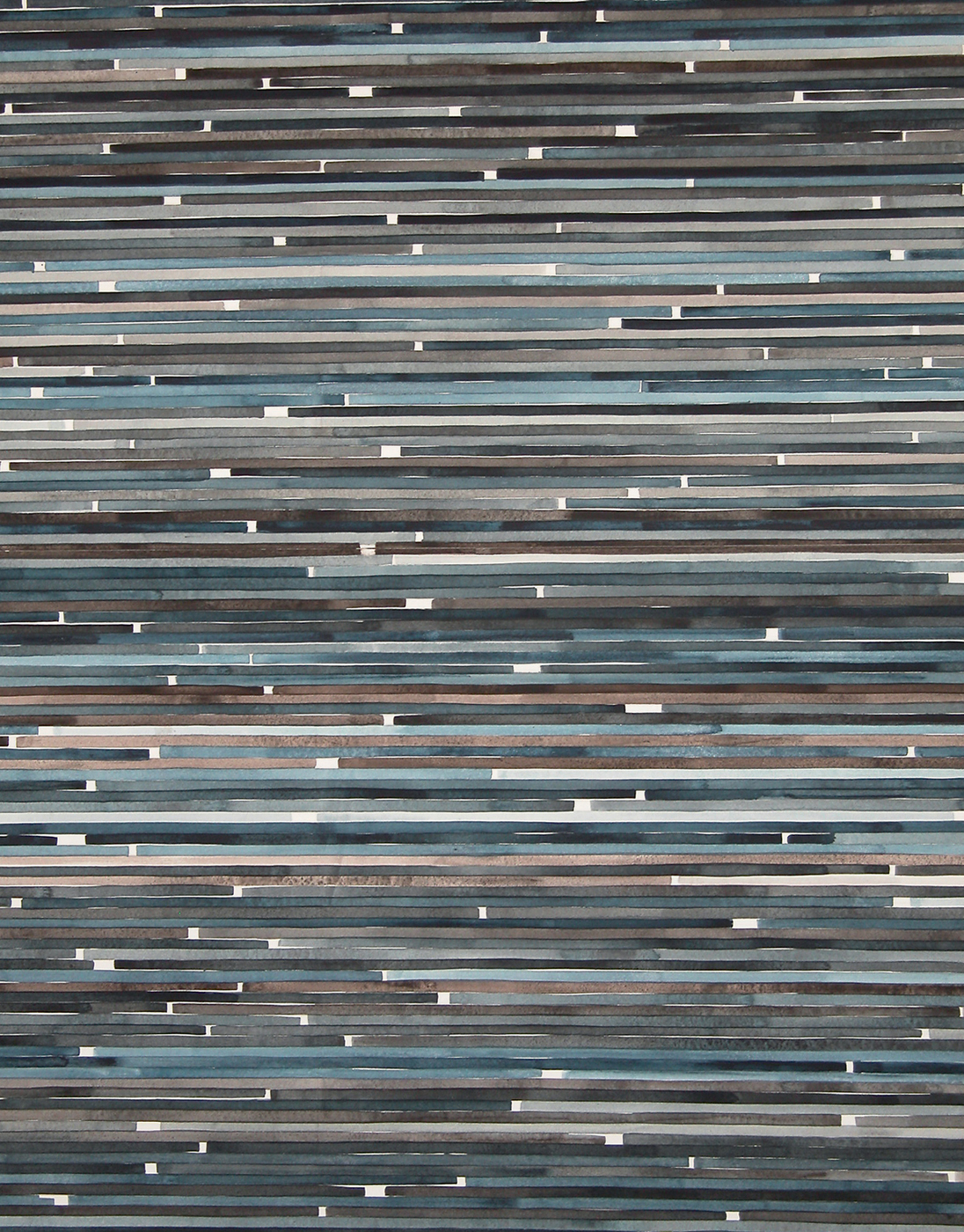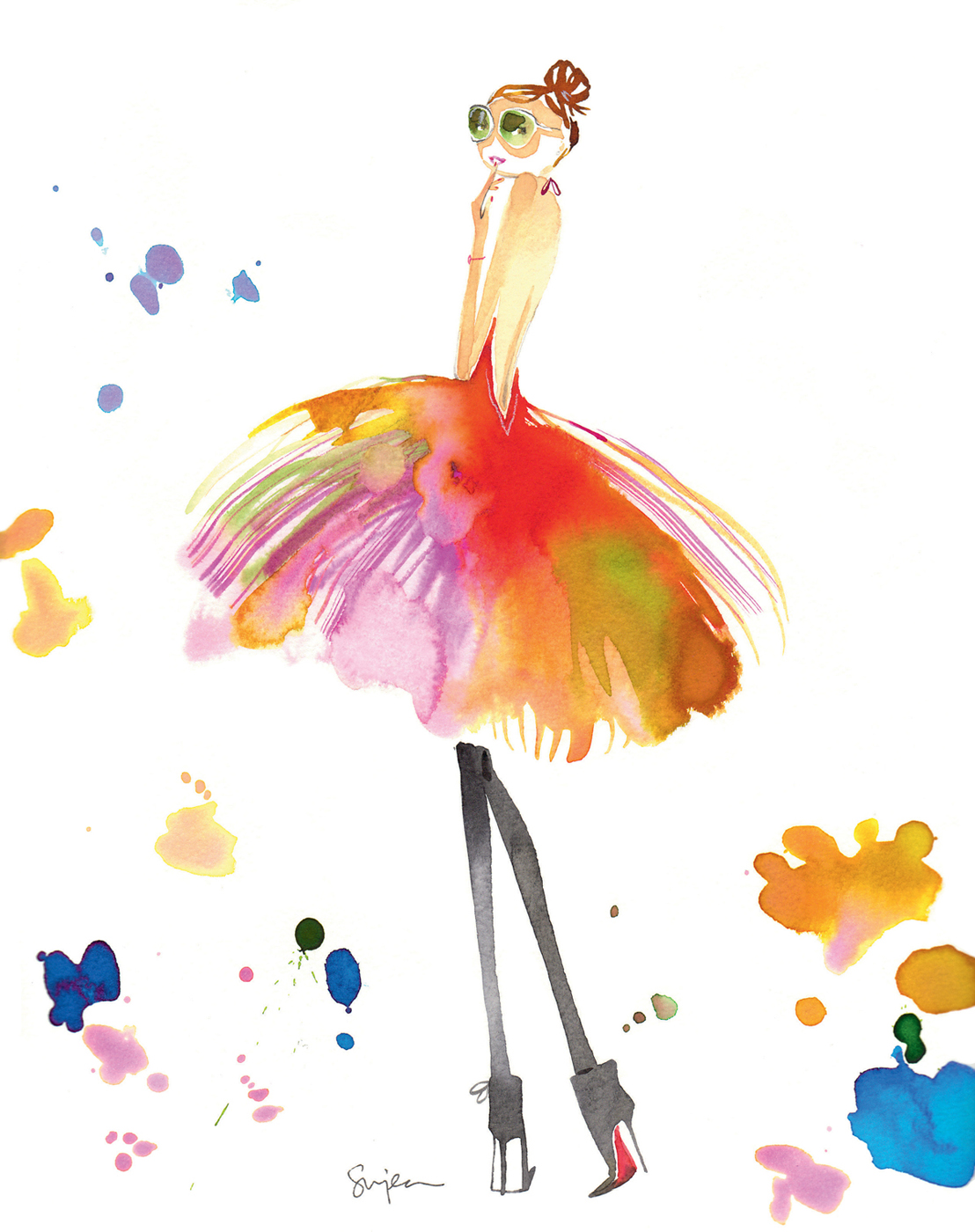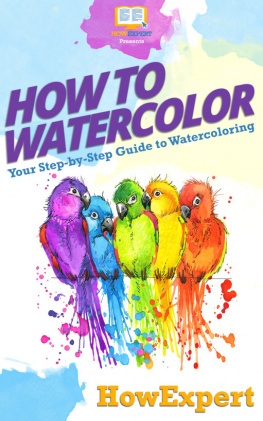
W A T E R
C O L O R
P AINTINGS BY
C ONTEMPORARY
A RTISTS
PREFACE by SUJEAN RIM
INTRODUCTION by LESLIE DUTCHER


Preface copyright 2013 by Sujean Rim.
Introduction copyright 2013 by Leslie Dutcher.
All artworks are copyright by the individual artists.
All rights reserved. No part of this book may be reproduced in any form without written permission from the publisher.
Book design by Neil Egan
Additional typesetting by Liam Flanagan
ISBN 978-1-4521-2772-9
The Library of Congress has previously cataloged this title under
ISBN: 978-1-4521-1264-0
Inside covers: artwork by Dear Hancock.
: artwork by Amy Park.
: artwork courtesy of Morgan Lehman Gallery, NYC
: artwork by Samantha Hahn.
: Photo by Lori Cannava 2011.
: Photos by Kevin Noble.
Chronicle Books LLC
680 Second Street
San Francisco, CA 94107
www.chroniclebooks.com
CONTENTS
by SUJEAN RIM
by LESLIE DUTCHER

Flirt , 2012
Watercolor
14 12 in. (36 30 cm)
Preface
by Sujean Rim
Watercolor is such a flirt.
The way it suggests form with sheer washes of color. The way it plays with light and depth with splashes of water. The way it can tease the eye by capturing realism until you notice shapes bleeding.
With watercolor, there are no perfect lines. There are many fewer rules than with other art forms, and there is no time to overthink. Once your wet brush hits dry paper, youre doneand there is no undoing what youve committed your brush to. And no matter what bag of tricks or techniques you may have developed, you are never quite in complete control.
As an artist, it can feel frustrating to not have that control. But if you allow watercolor to just do its thingand stay open to those inevitable happy accidents, whereby colors leak into each other or your brush runs dry in the middle of a strokethe most beautiful things can happen. The not-always-knowing-what-to-expect feeling that this medium sparks is what I find the most funits what keeps me curious. You may never truly get to know your watercolor, but you can flirt back.
My first encounters with watercolor were probably much like yours. Childhood memories of painted fingers, splattered smocks, rolls of white paper, old coffee cans full of dyed water, and fat friendly brushes come to mind. It was fun, but I wasnt all that smitten just yet. Crayons, glitter and glue, and Play-Doh were just as impressive.
It wasnt until I watched my father ceremoniously take out an old handsome lacquer box of sumi-e black ink and beautiful bamboo brushes that I really took notice. He would paint Korean and Japanese calligraphy onto soft and translucent white paper with this incredible black and syrupy ink. I could feel his thoughtful concentration. Each brushstroke was confident and each had purpose. When I asked if I could pleeaasse try those awesome brushes and ink, I was always turned down and told, Someday. I knew they had to be something special.
I later took closer notice of the old Korean landscape paintings around our house. They were on pretty silk scrolls hanging from wooden dowels. You probably have seen something similar at your favorite Asian restaurant. No matter the quality, I found these images of mountains, water, and nature to be increasingly beautiful, and I started to wonder, How did they do that? How did they paint those peony petals to look so real and delicate, or those mountains to look so grand?
Soon I would come to admire more styles of watercolor. Among my first inspirations was Charles Schulz (yes, the creator of the cartoon dog Snoopy). I received a big art book of his work that showcased some of the beautiful watercolor backgrounds he painted for his comic strip, Peanuts . These artworks, like the Asian ones I had grown up with, also employed visions of nature.
Whether it was an autumn scene with piles of colorful foliage or a snow-filled winter landscape, each depiction captured so much feeling, yet with little detail. These paintings appeared so loose in their renderings. You could see droplets of water, you could see gradations of color blending into each other. And the use of the negative space of the paper fascinated mea small unpainted area in a wash of blue suddenly became a cloud in the sky.
In art school I was able to experiment with lots of media. I tried oils and acrylics, but I felt lost and overwhelmed in the world of linseed oils and varnishes. I would always come back to watercolor. And I still return to itmaybe because of the simplicity of needing only water to paint, or maybe because I simply love to sketch.
I love the spontaneity of capturing an image. It is pure, honest energy and emotiontheres no struggling, no worrying for perfection in a sketch. Painting with watercolor has that sense of immediacyyou are working with wet and running color, so you have to get your brushstrokes down quickly. Theres not much time to think or agonize, so in the end you hopefully can just enjoy the ride.
When asked what medium I use, it is not surprising to hear, upon giving my response, a polite Oh, watercolor. Thats so sweet. Or Now, I have a friend who paints with oil . Maybe it is because we have childhood memories of those splattered smocks that I mentioned before, but to those who question watercolors sophistication, I would have them take a look at works by Winslow Homer or Andrew Wyeth. For breadth of style, I say look at Charles E. Burchfield, J. W. S. Cox, Mats Gustafson... and just take a look at this book.
Im certainly smitten.
Introdu c ion
by Leslie Dutcher

Watercolor spots by Samantha Hahn
Watercolor is a felicitous and spontaneous medium. Notoriously unforgiving, it works best for artists who strike a fine balance of skillfully harnessing its unpredictable character and gracefully accepting its chance-like meanderings. The combination of both this control and this letting go has given the medium its freshnessthe sense that its images are always on the precipice of blossoming or dissolving, each held in one fleeting moment of time. The good watercolor is, perhaps, a mere visual record of its becoming.
Watercolor is also an intimate medium; its tools (brushes, a small palette, and pigment tubes or cakes) fit in a knapsack or even a large pocket, and the artist can cultivate his or her inspiration just about anywhereon a city park bench, at a caf table, or on a train. This has made the medium popular to Sunday painters, documentarians, and the obsessively driven alike. It has also made it favorable to young children, who include a tray of watercolor paints and a brush among their first school supplies.
While often shadowed under the more serious medium of oil painting, watercolor has proved to be as elegant and academic as its counterpart, while retaining its own ebullience and congeniality. In the twentieth century especially, the medium achieved high art status in works by artists such as Wassily Kandinsky, Paul Klee, Egon Schiele, and Joseph Beuys. Contemporary artists, from Anselm Kiefer to Gerhard Richter, have also employed the medium in some of their most colorful pieces.
Next page








